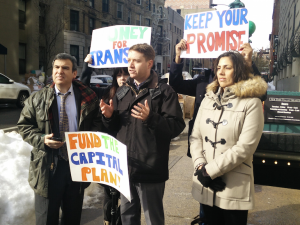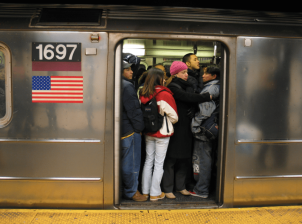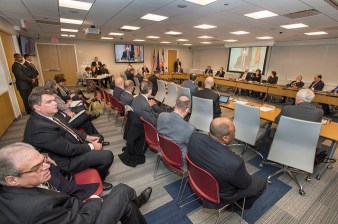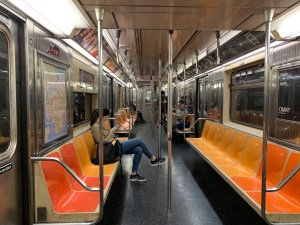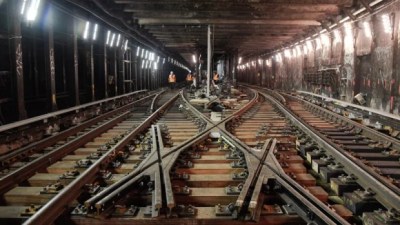Report: The MTA Does More for the Nation than The Nation Does for the MTA
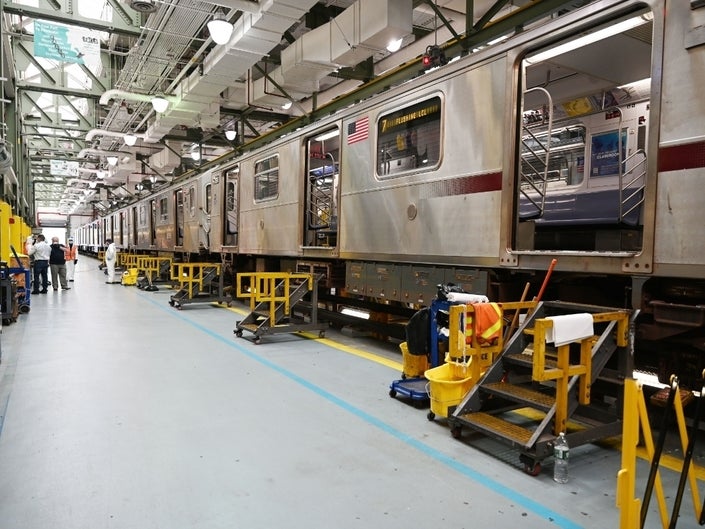
Ask not what the MTA can do for your country — ask what you can do for the MTA.
As New York City’s regional transit agency seeks additional recovery funds from a recalcitrant federal government, a new report by Reinvent Albany [PDF] points out something that frequently eludes our national leaders: the MTA spends billions of dollars and creates tens of thousands of jobs in all but one of the states of the continental U.S.
Between 2011 and 2018, the MTA bought $8 billion in goods and services from companies outside of New York State — boosting the economies of localities from sea to shining sea. The agency also spent $15 billion inside New York, plenty of it in upstate communities whose residents might not benefit from metropolitan area buses and trains, but definitely do benefit from state spending.
The report makes a clear argument of the imperative for the federal government to provide a new round of funding for the coronavirus-plagued agency, which has a $17-billion annual budget (more than many states!). Thus far, Congress has allocated only $3.8 billion — which will run out quickly as the MTA loses roughly $1 billion a month in lost fare revenue, plus additional shortfalls from the current collapse of other dedicated tax revenue during the crisis.
“Federal officials need to see that the MTA is a major player in terms of creating jobs, not just in New York, but across the country,” said Rachael Fauss, who worked on the report. “A third of all its spending — $8 billion over eight years — was done outside its home state. That’s so significant. We estimate 100,000 jobs were created.”

Many of the line items in the Reinvent Albany report are obvious — the MTA buys buses from New Flyer in Minnesota, train control systems from Siemens in Illinois, and a lot of software from Oracle in California — but so many other out-of-state companies benefit when a healthy MTA sends out its purchase orders.
Rail ties, for example, come from Appalachian Timber Services in West Virginia, which earned about $21.5 million. Nortrak, a rail parts company in Birmingham, Ala., made $43 million. When the MTA needs concrete rail ties, it goes to Rocla Concrete in Denver — “your partner for complete rail infrastructure” — which earned $17 million.
Another $6 million or so was spent on seat cushions for M7 commuter rail trains made by Fellfab in Atlanta. Company Vice President Paul Anderson estimated that he’s been able to retain and hire 15 workers simply because of the money coming from New York.
“It’s been an excellent contract,” he told Streetsblog. “The MTA is great to work with. They’re frugal with their money, which is what you want as a taxpayer, but they’re great to work with.”
Wyoming is the only state of the lower 48 that lacks a single company that won an MTA contract in the eight-year period.
The report hits as the Senate has failed to move forward on a second $3.9-billion allocation to the cash-strapped MTA, which carries roughly 39 percent of the nation’s public transit riders, yet only got about 15 percent of the federal government’s emergency transit grants earlier in the virus crisis, as Streetsblog reported. (A call to Senate Majority Leader Mitch McConnell was not returned.)
Ken Lovett, a spokesman for the MTA, said the report “validates our argument that an additional $3.9 billion in federal funding for the MTA will not only benefit the New York economy but the country’s as a whole.”
Here are the states with companies supplying the MTA between 2011 and 2018 (click around for your favorites):
- New York: $15B
- New Jersey: $1.7B
- Pennsylvania: $1.4B
- California: $797M
- Illinois: $691M
- Minnesota: $481M
- Ohio: $293M
- North Carolina: $266M
- Maryland: $265M
- Texas: $219M
